Quote:
Originally Posted by eccieuser9500

I only did that because he brought up the Elitist Carlson.
Okay. You're legitimizing New Yorker magazine. Got it. If you say so.

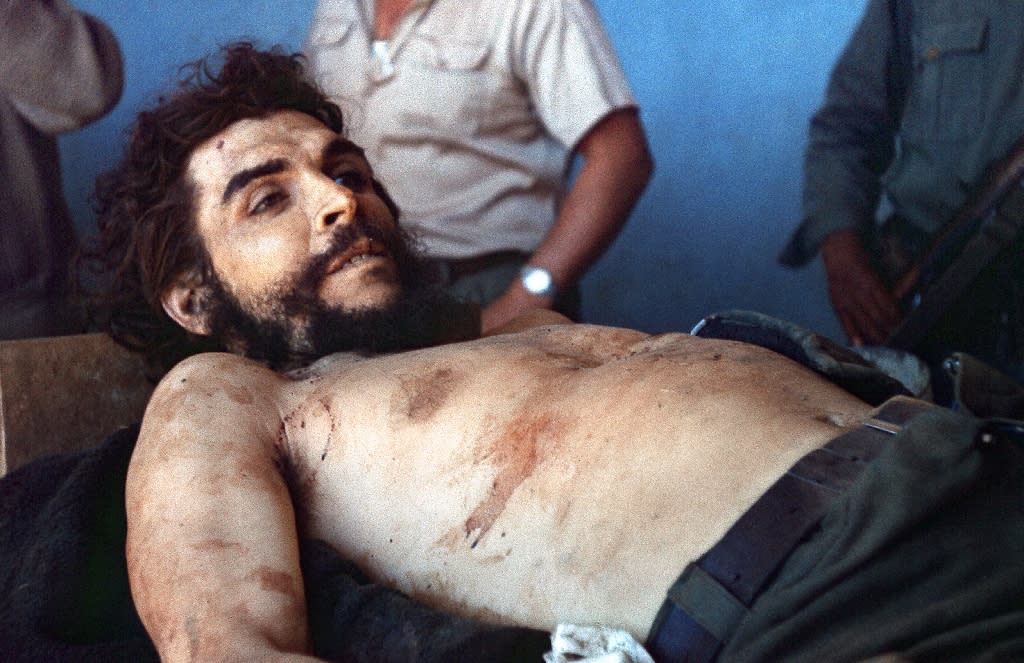
Mr. Wiki Kid |
i like color photos of dead commies.
so sorry to do this mate .. but it has to be done.
Nobody’s Hero: 9 Inconvenient Truths about Che Guevara
https://historycollection.com/nobody...s-che-guevara/
In previous articles about
Che Guevara, I have written that ‘one man’s revolutionary is another man’s terrorist.’ To his proponents, of which there are still millions today, Ernesto ‘Che’ Guevara was a freedom fighter; a man who championed the cause of the downtrodden against oppressors. To his opponents, he was a bloodthirsty murderer who killed for sport. In Cuba, he is apparently a national hero, and there are also statues of him in Argentina. In the United States and other nations, he is
vilified as a terrorist.
Much like age, facts can make fools of us all. The notion that Guevara was entirely a force of good should have eroded over time as more information was made available. Yet there are those who still have an idealistic idea of who he was and what he did. It is time to put that notion to bed once and for all. The reality is this: Che Guevara should be nobody’s hero and here are 9 reasons why.
1 – Retribution against the Former Cuban Regime Was Brutal
In this case, one may try to point out that
Batista was a cruel and oppressive ruler and Guevara et al. were just meeting fire with fire. Then there is the fact that revolution almost always comes with bloodshed. During the revolution, for example, Batista’s men rounded up rebels and executed them on the spot. They also murdered and tortured civilians. In this instance, it is hardly a surprise that Castro’s rebels were brutal in their retribution after seizing the capital, but Guevara was involved in some terrible atrocities.
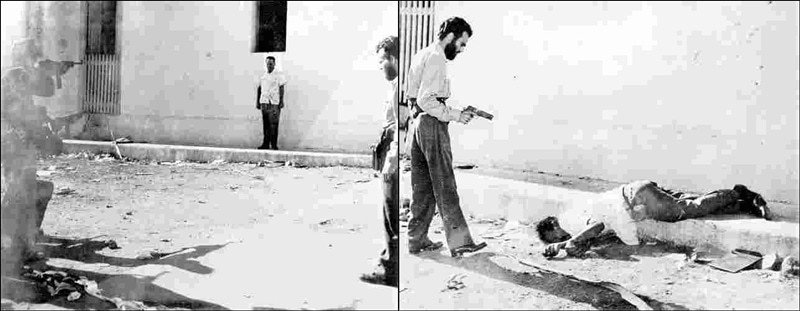
A man meets a firing squad in the aftermath of the Cuban Revolution. GunfreezoneAdvertisement
He was the governor of Santa Clara prison for five months (January to June 1959), and during this time, he reveled in the ensuing bloodshed. Several hundred people were
executed during his tenure, but accounts vary as to his role. His supporters suggest that he tried to pardon as many people as he could, but this assertion is in stark reality to what we know about his character. Remember, this is a man who said: “A revolutionary must become a cold killing machine motivated by pure hate.” Does this sound like something a man would say if he were intent on pardoning enemies?
The truth is, Guevara enjoyed the ritual of the firing squad and approached his task with the same glee one would have when opening a birthday present. Tradition dictates that one of the rifles used by a firing squad was filled with blanks. However, Guevara insisted that every rifle was filled with live ammunition to ensure each man in the squad knew he was an executioner.
It is true that the people of Cuba were supportive of the executions, but Guevara didn’t even bother to give the accused
a fair trial. In his opinion, “judicial proof was unnecessary” when it came to executing members of the former regime. In cases where someone survived the firing squad, he would walk up and shoot the person in the head. This leads us to the next point.
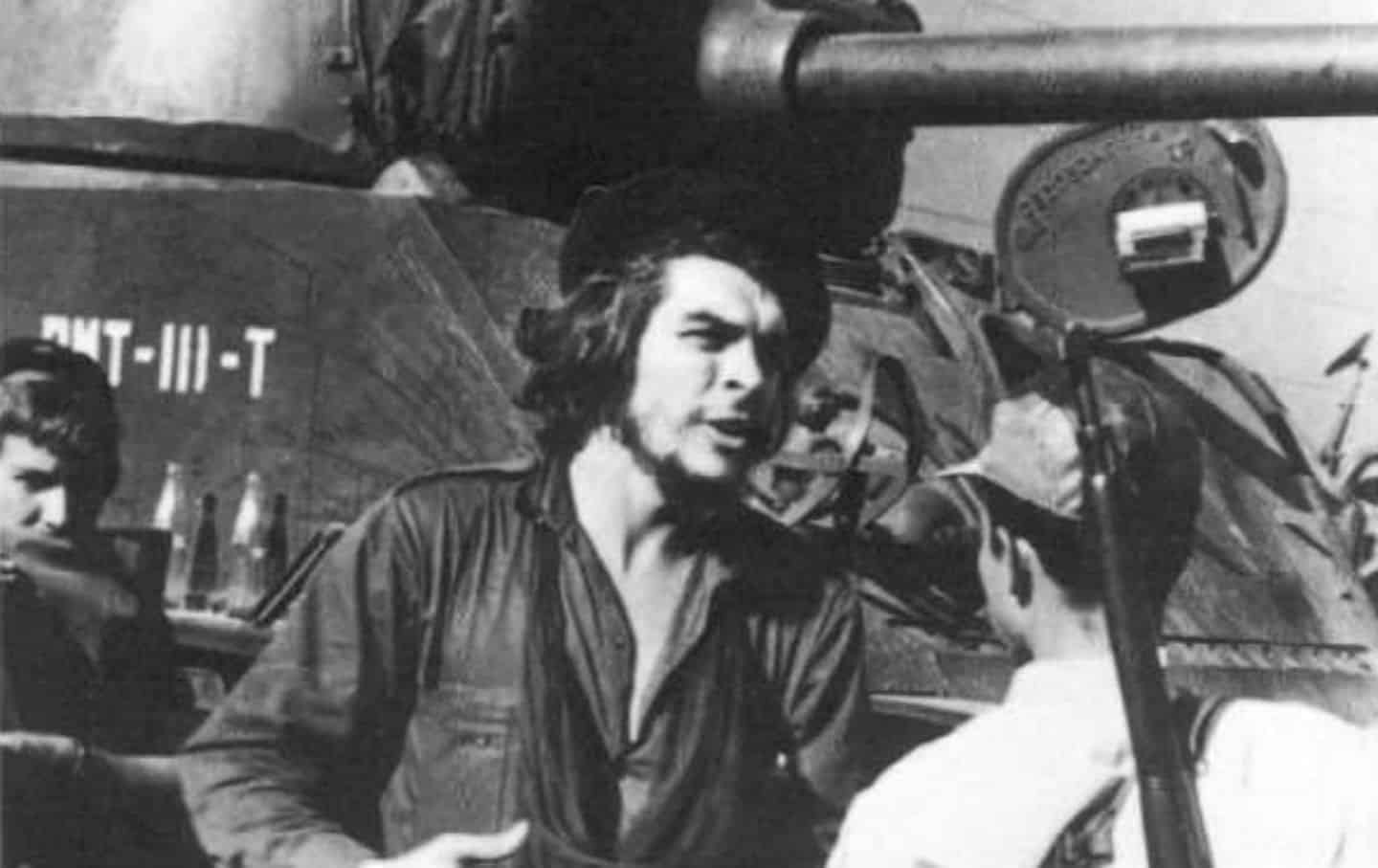
Guevara after the Battle of Santa Clara in 1958. The NationAdvertisement
2 – He Enjoyed Killing
The various murders Guevara was involved in had less to do with ‘necessity’ and more to do with the fact that he really enjoyed it. There are a variety of quotes attributed to him which suggests as much. For example, he once said that killing made his “nostrils dilate while savoring the acrid odor of gunpowder and blood.” He was even angry at the Soviet Union’s failure to attack America claiming that
Cuba would have used the missiles.
Of course, actions speak louder than words and Guevara mastered the art of murder. While many of the executions he ordered were members of the former regime, he didn’t hesitate to kill just about anyone who got in his way. Journalists, businessmen and former colleagues who didn’t agree with him were all executed on his orders.
He is also ‘credited’ with the creation of Cuba’s first ‘corrective work camp’ which was little different to the
Soviet Gulags of the time. There were unimaginable atrocities committed in the two main prisons; Santa Clara and La Cabana. Reinaldo Arenas is a Cuban writer, and he spent time in La Cabana. According to Arenas, he was arrested for his anti-authoritarian views and wrote about the appalling conditions inside. There was no bathroom, while beatings were commonplace as were executions.
Arenas also spoke of how his colleague, Herberto Padilla, had his spirit crushed in La Cabana. For 30 days, Padilla was locked in a prison, beaten and tortured until he branded himself a traitor and renounced all of his previous work which was critical of the regime. The exact number of people executed on Che’s orders is unknown, but it is probably in the thousands. As I mentioned in the previous point,
Guevara often shot victims himself, so we also have no idea how many people he murdered during his time on Earth. It is likely that he killed well over a hundred people himself. Not because they were ‘enemies of the state,’ but because he wanted to and he enjoyed doing it.
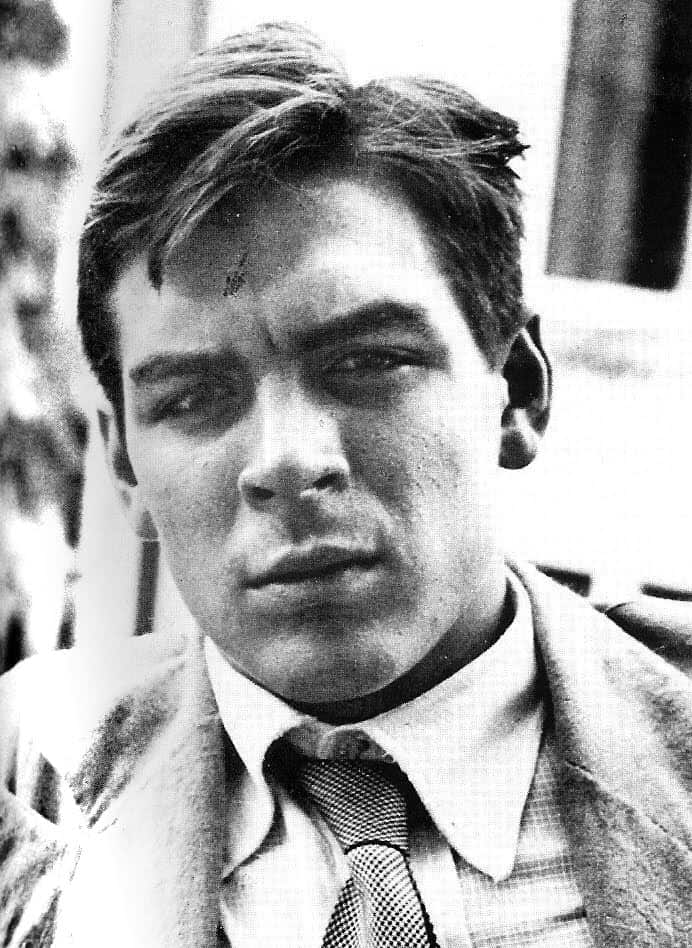
Clean Shaven Che. PinterestAdvertisement
3 – He Wasn’t a Guerrilla Mastermind
Che Guevara is often held up as some kind of military genius because of his role in the
Cuban Revolution. It was certainly one of the greatest guerrilla triumphs of all time, and Guevara does deserve credit for playing a major role. His victory over government forces at Santa Clara, where he was severely outnumbered, was a remarkable one. However, his military reputation appears to be built solely on this impressive win.
Guevara was involved in a number of guerrilla warfare attempts after the Cuban Revolution; each of which was an utter failure. His two
high-profile failures occurred in the Congo in 1965 and Bolivia in 1967. In the Congo, he allied himself with Laurent Kabila and Pierre Mulele. Relations with Kabila were quickly strained, and Guevara blamed the incompetence of the Congolese rebels for the failure.
Bolivia was another complete disaster; one which resulted in his death. The accounts of his exploits underline just how overrated he was as a commander. As well as being so arrogant that he refused to listen to advice from others, Guevara had a poor grasp of supply and logistics. His failure to identify with the Bolivian peasantry ensured his mission was doomed from the start. Ultimately, his group was cut off from any resupply routes and began to starve in the nation’s jungles. Guevara was reportedly a
‘pitiful sight’ when captured.
Aside from his well-known escapades, there is also the small matter of his failed revolutionary armies in Panama, Haiti, Dominican Republic and Nicaragua. One of Che’s colleagues, Jorge Masetti, embarked on an idiotic scheme to try and start a revolution in Argentina. Masetti was supported by Guevara but proved to be an even less capable leader. With a group of Cuban commandos, Masetti entered northern Argentina but the ‘revolution’ was swiftly put down by provincial police. Masetti probably got lost in the jungle and disappeared in April 1964.
In simple terms, had Guevara remained in Cuba after the revolution, his reputation as an excellent military commander would probably have remained intact. However, he met with nothing but failure once he tried to expand his ‘vision’ around the world. In the end, his legacy is far less impressive than anyone would care to admit.
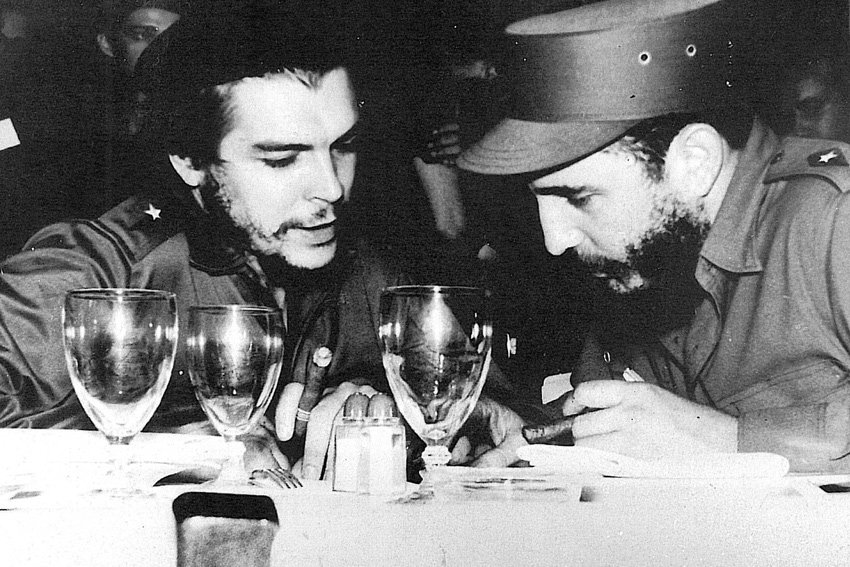
Che and Castro. Sociable.coAdvertisement
4 – He Helped Ruin Cuba’s Economy
Guevara helped Castro oust the U.S.-backed dictator of Cuba, Fulgencio Batista in 1959. There’s no question that life under Batista was awful for Cubans as he murdered thousands of people and oversaw torture and public executions. But the notion that life improved after Batista is a complete myth.
As bad as things were in Cuba during the 1950s, its economy actually worsened during the 1960s and thereafter. For example, industrial and agricultural wages rose significantly in the 1950s and were not far behind wages in Europe. Workers were protected by an 8-hour workday, they were entitled to a month’s annual leave, and mothers were given 6 weeks off before and after childbirth. There were almost 60 different daily newspapers, and Cubans had high levels of car, radio and telephone ownership.
Things changed for the worse once Guevara was handed the
roles of Finance Minister and President of the National Bank. One of his first acts was to nationalize banks, factories, and businesses in a bid to eliminate social inequalities. While he admittedly led by example (he worked insanely long hours), Guevara removed the protections workers previously enjoyed. During his reign as Finance Minister, Cubans had to meet specific quotas and had their pay cut if they failed to meet their targets. Those who exceeded their targets only received certificates of commendation.
Overall, his programs were a complete failure. Productivity dropped while absenteeism increased markedly. One of his former deputies said Guevara was: “ignorant of the most elementary economic principles.” Cuba was reliant on huge money transfers from Moscow and in return, the island nation became a beachhead for Soviet nuclear weaponry. By diverting resources to industries that ultimately failed, he helped
destroy the Cuban economy. In just two years, he managed to halve the nation’s sugar harvest.
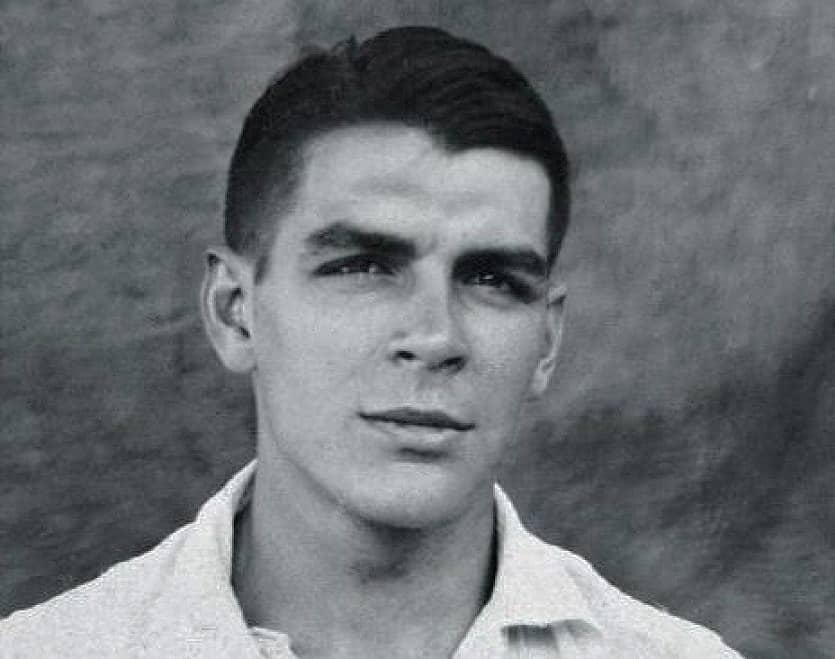
Young Che Guevara. Klimbim WordPressAdvertisement
5 – He Didn’t Have a Medical Degree
One of the famous stories surrounding Che is the fact that he initially traveled with Castro’s revolutionary army as a medic. In late November 1956, the men were attacked by Batista’s army and approximately 60 of Castro’s men killed or executed. According to legend, Che dropped his medical supplies and picked up a box of ammunition that had been dropped by one of his fleeing comrades. Whether or not this is true, Che soon showed that he was extremely capable with a weapon in his hands.
It is also suggested that he became Dr. Ernesto Guevara in June 1953 after completing
his medical degree. According to writer Enrique Rios, it is extremely unlikely that Che ever completed his full medical education. Rios points out that Che somehow managed to pass 15 subjects (almost half of the total requirement) in three months without attending classes or practices throughout most of the year at the University of Bueno Aires’ School of Medicine.
Indeed, ‘Doctor’ Guevara would have needed to attend classes 25 hours a day for the 66 school days in October, November, and December 1952 to fulfill the academic requirements of the curriculum. When Rios contacted the School of Medicine and requested a copy of Che’s academic record, he was told that it had been stolen. Furthermore, there are no photos of his graduation, testimonies from fellow graduates or any other proof that he graduated.
Prior to his involvement in the Cuban Revolution, Che didn’t have a steady job and was dependent on his mother, sister, and other females to send him money, help him gain employment and settle his debts. Indeed, his future first wife,
Hilda Gadea, even introduced him to some important government contacts in a bid to help him get a medical job.
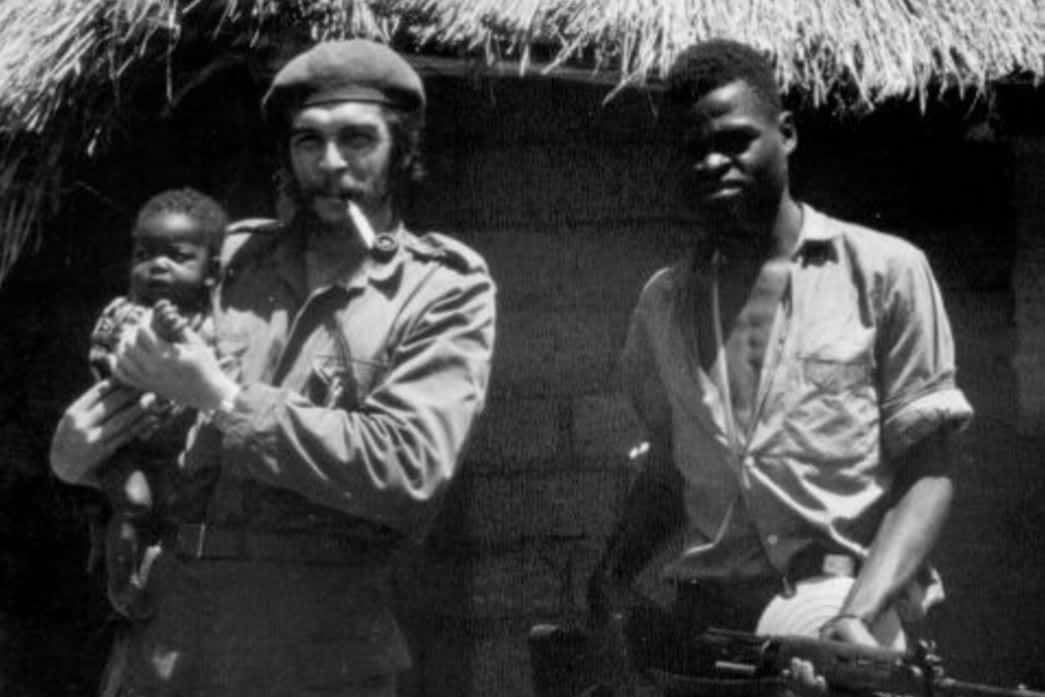
Guevara in the Congo. JacobinmagAdvertisement
6 – He Was Possibly a Racist
According to Jean Paul Sartre, Guevara was: “
the most complete human being of our time.” Presumably, Sartre was unaware of the guerrilla’s homophobia and racism. Guevara was open about his contempt and hatred of capitalism and the United States in particular. He pointed out that America couldn’t claim to be a democracy when there was discrimination against black people and because the
Ku Klux Klan existed.
The problem is, Guevara was possibly a racist himself. After the victorious Cuban Revolution in 1959, he said: “We’re going to do for blacks exactly what blacks did for the revolution. By which I mean: nothing.” During his first journey through Latin America, he wrote that Africans had maintained their racial purity because of their “lack of affinity with bathing”; an ironic statement given his notoriously poor personal hygiene. He also said: “
The black is indolent and a dreamer; spending his meager wage on frivolity or drink.” His attitude is very similar to that of slaveholders in the United States.
Guevara also referred to Mexicans as “a band of illiterate Indians.” One might try to excuse his comments as being borne out of frustration for his failure in the Congo. However, these comments were made long before he campaigned in Africa. Indeed, the fiasco in the Congo showed how little he really understood the people he campaigned with.
He surmised that the Congolese were not revolutionary and were satisfied with their lot. He continually whined about the lack of leadership amongst the Congolese along with their apparent incompetence. One issue was that the black Cubans perceived themselves as superior to the Congolese and treated them with contempt. It is hardly surprising that relations between the two groups of people were soon strained to breaking point. Some commentators believe Che’s comments should be taken in the context of the time which meant he was not racist.
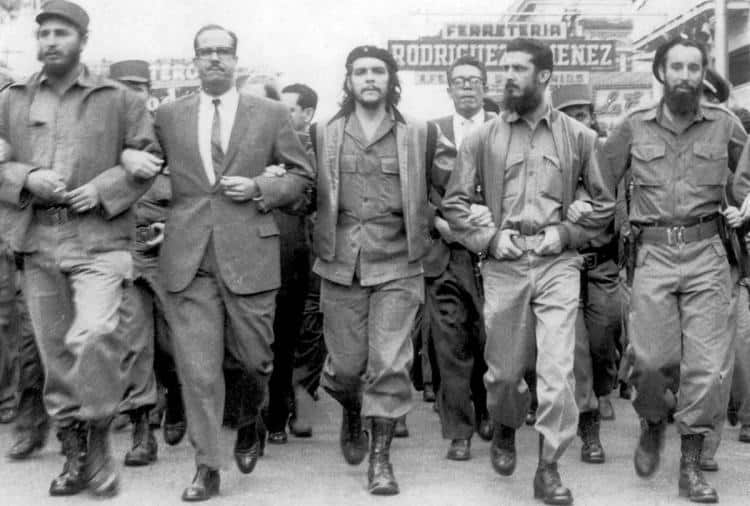
Che (centre) marches with Castro (far left) in a victory parade in Havana 1959. NY Daily NewsAdvertisement
7 – He Hated Homosexuals
Guevara was a notorious homophobe. He campaigned to have gay people placed in prison, and when they were interned, they were treated worse than the rest of the prisoners. According to one inmate, gays were treated like beasts, and they were the last to come out for meals.
If a gay prisoner committed even the slight infraction, he was beaten mercilessly. Admittedly,
Cuba’s LGBT rights record was bad before the revolution, but under Castro and Guevara, concentration camps were created and filled with homosexuals, dissidents, Afro-Cuban priests and anyone else accused of crimes against the revolution. He helped set up the infamous camp Guanahacabibes camp in 1960. One of the reasons why
gay men were placed in camps is because they were deemed ‘unfit to serve’ their mandatory time in the Cuban military.
Che referred to these groups of people as ‘scum.’ He herded homosexuals, priests, dissidents and other ‘undesirables’ into buses and trucks where they were taken to the camps. A significant number of prisoners never returned as they were beaten, tortured, raped and murdered. In the camp where homosexuals were sent, there was a sign which said ‘Work Will Make You Men.’ It is obviously influenced by the infamous ‘work will set you free’ slogan on
Nazi Concentration Camps.
Interestingly, it is alleged that Guevara wasn’t at all sure about his sexuality when he was a young man. There are suggestions that he was attracted to his companion on his first trip across Latin America but to be fair, there is no evidence that this is the case. Therefore, we have to assume that these are completely false tales.
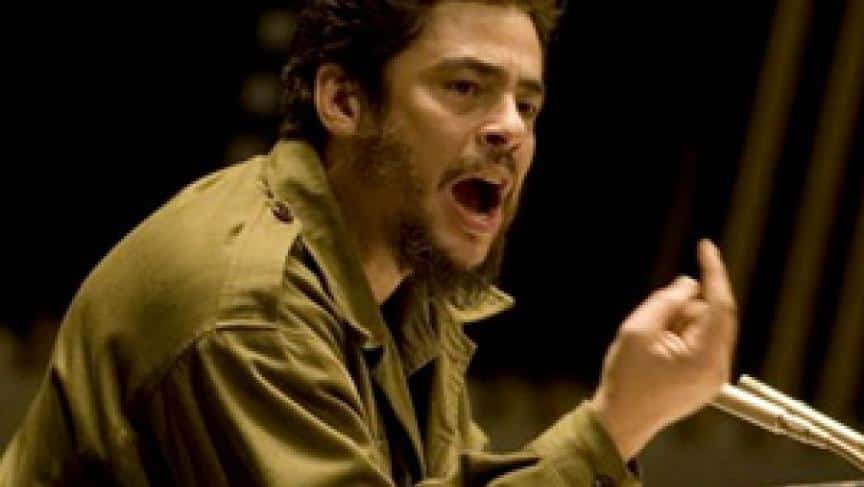
Benicio Del Toro as Che in the highly romanticized account of his life. Pri.orgAdvertisement
8 – He Was an Adulterer
If it wasn’t enough that Che was apparently a
murderous racist homophobe, he was also a serial womanizer. He was reportedly a hit with the ladies from an early age. Remember, he grew up in a middle-class family in Argentina, and it was normal for him to have sexual relationships with the maids in his friend’s homes. One of his childhood friends nicknamed him the ‘fast rooster’ because whenever a maid entered the dining room when he was eating, he would force her to climb on the table for sex. He reportedly has sex with a maid at his aunt’s house while his aunt was in the room with her back turned.
In his writings, it is clear that Che showed the same contempt for women as he did for blacks and homosexuals. He referred to a young girl he had sex with in Costa Rica as a ‘whore’ for example. In a way, it is amazing that he had such success with the opposite sex given his abominable personal hygiene. He was nicknamed ‘chancho’ (pig) by schoolmates because of his refusal to bathe. While in Bolivia, he wrote that he didn’t shower for six months.
The suggestion is that he left Cuba in order to spread communism around the world. However, his increasingly
disastrous private life probably contributed to this decision as well. He married Hilda Gadea in 1955 but left her and married Aleida March in 1959. March wrote about her husband’s infidelity by saying it was a hard life for her and the kids. She said: “Ernesto goes out every night and gets drunk and picks someone up.”
Che had five children officially but given his sexual appetite and almost unlimited power while in Cuba, it seems likely that he had a few illegitimate ones too. It is worth bearing in mind that he was no sort of father to his children and had no issue abandoning them and his wife when he went traipsing around the globe trying to promote communism. There are of course some lurid accusations about his private life that I will not address here.
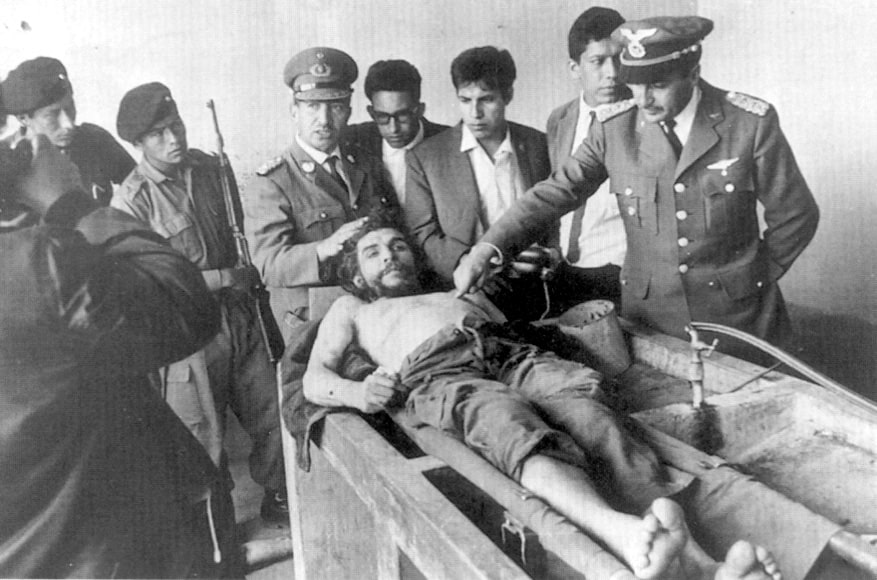
Bolivian army officers pose with the corpse of Che Guevara. LatinAmericanStudiesAdvertisem ent
9 – His Death was neither Brave nor Noble
Given the heroic light he is held in according to the legend, it is no surprise to learn that the events surrounding his death are also mythologized. For example, it is claimed that he told his executioners to shoot him because “he is only a man.” The reality is very different according to people who were there. When enemy soldiers found him, he said: “
Do not shoot! I am Che Guevara, and I am worth more to you alive than dead.”
The famed rebel was a pitiful sight upon capture as a lack of food and supplies took its toll while he hid in the jungle. After being caught, he was tied up and held in a local schoolhouse. During his internment, he kicked an officer who tried to take his pipe and spat at another man who tried to question him. On October 9, 1967, the President of Bolivia
ordered the execution of Guevara.
According to Felix Rodriguez, who was involved in the capture of Che at La Figuera, Guevara “turned white like a piece of paper” when he went to speak with him around 30 minutes before the execution. Eventually, Che said: “It’s better this way. I should never have been captured alive.” Mario Teran, who was an alcoholic, volunteered to kill Guevara because three of his friends had died in a previous battle with the rebels.
Rodriguez ordered Teran to avoid shooting him in the head. Instead, he was supposed to make it look as if the rebel leader had died during a fight with the Bolivian Army. Teran shot him in the legs and then the torso, but in doing so, he merely added to the legend. Instead of dying as a pathetic wreck in an abandoned schoolhouse, it initially seemed as if
Che Guevara had died bravely in battle.
Overall, the notion that Che Guevara was a champion of freedom is completely erroneous. He had no problem forcing the people of Cuba to work long hours for little or no pay. Che was also opposed to free speech, religion, the press, protest, and assembly. As soon as the new regime assumed power, Che was instrumental in crushing dissenting voices and ensuring Cuba remained under the iron yoke of a dictator.
Gay? Che Guevara would have sent you to a concentration camp.
Che Was a Racist, Homophobe and Mass Murderer
https://www.humanprogress.org/the-tr...mass-murderer/
Today, 50 years after his death, many people still remember Ernesto “Che” Guevara as a warrior for social justice. For so many celebrities, politicians, and activists, Che Guevara is a kind of Good Samaritan who fought against oppression and tyranny. It is unfortunate, though, that these people ignore some of their idol’s defining character traits.
Che Guevara was in fact an intolerant and despicable man.
In the process of building a communist society after Fidel Castro came to power in 1959 in Cuba, one of the ideas Che Guevara presented and promoted was the notion of the “new man.” This concept grew out of Guevara’s aversion to capitalism, and was first explained in his note on “
Man and Socialism in Cuba“. He
believed that “The individual under socialism (…) is more complete,” and that the state should educate men and women in anti-capitalist, cooperative, selfless and non-materialistic values.
Anyone who deviated from the “new man” was seen as a ”counter-revolutionary.” Such was the case of gay men —whom Guevara referred to as “
sexual perverts.” Both Guevara and Castro considered homosexuality a bourgeois decadence. In an interview in 1965, Castro
explained that “A deviation of that nature clashes with the concept we have of what a militant communist should be.”
Che Guevara also helped establish the first Cuban concentration camp in
Guanahacabibes in 1960. This camp was the first of many. From the Nazis, the Cuban government also adapted the motto at Auschwitz, “Work sets you free,” changing it to “
Work will make you men.” According to
Álvaro Vargas Llosa, homosexuals, Jehova’s Witnesses, Afro-Cuban priests, and others who were believed to have committed a crime against revolutionary morals, were forced to work in these camps to correct their “anti-social behavior.” Many of them died; others were tortured or raped.
Guevara also espoused racist views. In
his diary, he referred to black people as “those magnificent examples of the African race who have maintained their racial purity thanks to their lack of an affinity with bathing.” He also thought white Europeans were superior to people of African descent, and described Mexicans as “a band of illiterate Indians.”
In the article “
My Cousin, El Che,” Alberto Benegas Lynch Jr. describes how Che Guevara enjoyed torturing animals —
a trait common to serial killers. His record of murdering and torturing people is extensive. Researchers have
documented 216 victims of Che Guevara in Cuba from 1957 to 1959. Suspicion was all that was needed to end a life. There was no need for trial because he said the Revolution could not stop “to conduct much investigation; it has the obligation to triumph.”
Death, to Guevara, was a necessity for revolution. He had no regard for human life. Today, 50 years after his death, it is important to remember Ernesto Che Guevara as the person he was: a homophobic, racist, mass murderer willing to use any means to achieve his self-declared superior society.
This first appeared in The Huffington Post.
https://www.huffpost.com/entry/are-y...b0b99ee4a9ca1e
BAHHHHHAHHAAAAAAAAAAAAAAAAA
